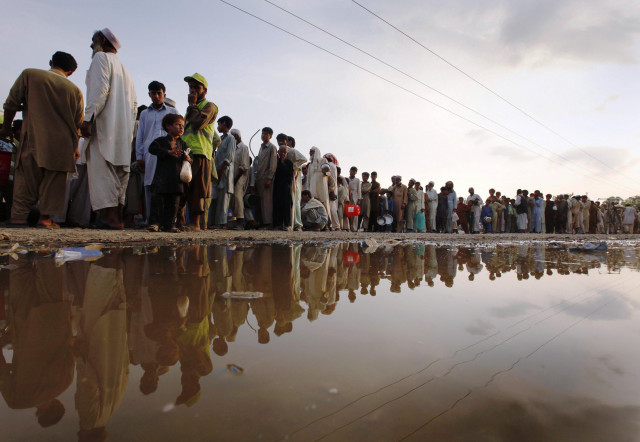Diseases flourish in DIK
The number of patients suffering from diarrhoea and skin infections is on the rise in Dera Ismail Khan.

Flood survivors in large parts of the district are facing health problems, with diarrhoea cases increasing in the Paroa tehsil and skin problems emerging as a predominant concern for village Budh.
The International Committee of the Red Cross (ICRC) has set up a Diarrhoea Treatment Unit (DTU) in a hospital in Paroa Tehsil, some 35 kilometres south of Dera Ismail Khan. Dr Hafiz, in charge DTU, said that on average 60 cases of diarrhoea are reported each day, with the number increasing up to 80 on sunny days and dropping a bit on cloudy and rainy days. Two deaths – of a woman and a child – as a result of diarrhoea have been reported so far.
Women account for around 60 per cent of all patients suffering from diarrhoea. Most patients come from the tehsils of Mara and Navilea.
Dr Hafiz said that a 35-year-old woman, Begum, was being treated for possible infection of cholera. Her tests have been sent to the National Institute of Health (NIH) in Islamabad to ascertain her condition.
Dr Naveed, at the Out-Patients Department (OPD), said that scabies was another ailment that was widespread among the locals, along with gastroenteritis.
He said that the OPD department was receiving around 180 patients, on average, each day. Prior to the floods this number stood at around 50.
Dr Idrees, at the paediatrics care, said that the number of patients has surged up by around 50 per cent, with most patients suffering from skin problems and gastroenteritis.
Dr Hafiz said that the centre, which offers the best treatment facilities for the poor people of this area, has treated around 400 persons in 10 days.
The facility has the capacity to treat around 100 patients per day and another ward has also been prepared as an emergency expansion.
He said the use of contaminated water was the major cause of disease. Dr Imranul Haq, another doctor at the hospital, told The Express Tribune that these problems would continue as long as the locals did not use boiled water for their daily needs.
Ghulam Qasim, a local of Shor Kot village, said: “I am suffering from skin infections because of working in flood water to retrieve household items, since my house has been destroyed by the flood. My five-year-old niece Husna is suffering from an infection due to big wound on her head. My son is suffering from boils”.
He said that infections were spreading due to mosquito bites. The water in the area has developed a peculiar taste since the floods ravaged the area, causing stomach cramps and fever, he added.
The district, one of the worst hit areas in the province, is still under several feet of water in several localities.
Though many villages are trying to survive in very tough conditions, the district has so far drawn little attention from the authorities and the media.
Published in The Express Tribune, August 29th, 2010.













COMMENTS
Comments are moderated and generally will be posted if they are on-topic and not abusive.
For more information, please see our Comments FAQ